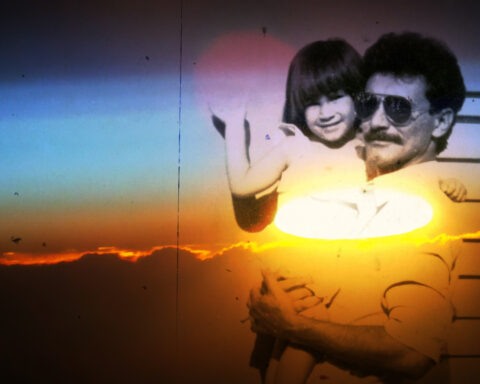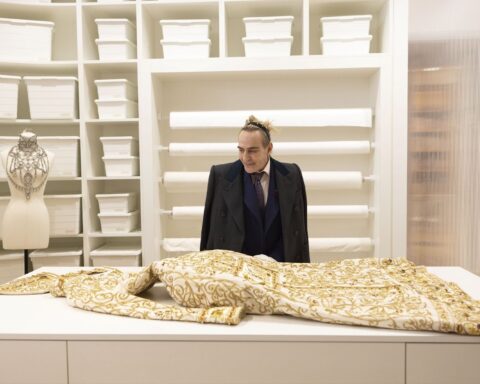Last year, The Hot Docs Canadian International Documentary Film Festival presented a retrospective of the work of John Kastner. The series was presented as part of the festival’s annual “Focus On” sidebar, but a more apt title might have been “Crime and Punishment.” Since 1986’s Emmy-winning The Lifer and the Lady through 2010’s Life with Murder and his new NCR: Not Criminally Responsible, which will premiere at Hot Docs, Kastner’s films have been preoccupied with such weightily Dostoyevskian themes. “I read Crime and Punishment when I was 18,” explains the veteran director in an interview conducted on the eve of Hot Docs. “If only, I thought, I could turn out a work of art like that, which forces people like me not to avert their eyes from the wretched of the earth. And while I do not have his genius, alas, I guess a little part of me has never given up the dream of becoming the Dostoevsky of the documentary.”
Let it not be said that Kastner lacks for ambition, but NCR is a very worthy addition to a body of work distinguished by its mix of tough-minded observation and palpable compassion. “I have been making docs which attempt to de-stigmatize somebody or other for over 30 years,” says the director. His latest candidate is Sean Clifton, a now-middle-aged man who in 1999 nearly killed a 22-year-old woman outside a Wal-Mart in Cornwall, Ontario, stabbing her repeatedly with a knife in a vicious, unprovoked and, as it turned out, totally random attack. Remarkably, the victim survived; Clifton was eventually remanded to a forensic psychiatric facility in Brockville after it was determined that he did not have the mental capability to form intent.
Following the critical and festival success of Life With Murder, Kastner was approached by a Toronto-based psychiatrist, Dr. Lisa Ramshaw, who wondered if he might consider making a movie about her field of work. “I instantly agreed, and then I snuck away to look up ‘forensic psychiatry’ in the dictionary,” he says. “It read ‘psychiatry having to do with the law,’ my two favourite subjects combined: health and crime. How could I resist?” During a visit to the Brockville Mental Health Centre, he met Sean Clifton and realized that he’d found his protagonist.
“Sean just happened to be around that day. I had no idea who he was or what he’d done. We had a pleasant chat and I was then shocked to learn later that this well-mannered, courtly gentleman had committed this dark act. There were other patients available to us who had done worse things. But there was something about Sean: he was quietly compelling, he could put his feelings into words quite eloquently, he was likeable—yes, despite his awful offence—and he seemed willing.”
This last issue of collaboration was a big one. Not only did Kastner need Clifton’s cooperation in order to make the film, but also that of the hospital and its staff—and also the victim and her family. “I think every single party had damn good reasons not to co-operate with me,” he says. “And it took some convincing, I can tell you.” Before becoming a documentarian, Kastner was a child actor, and to hear him tell it, he’s retained a sense of showmanship in his grown-up endeavours. “All I will say now is that I am often wildly unconventional in my methods. For instance: since I am basically a very silly man doing very serious documentaries, I often use my silliness to disarm subjects. I will approach a subject who has balked at signing a release, even when the situation is excruciatingly sensitive, and lean over and whisper in his ear in a very confidential tone, ‘I have to warn you of something before you sign this release: we are going to take your image and insert it into a porn movie and also Photoshop a horse’s head on you. You don’t mind, do you?’
“Incredibly, this is so outrageously silly that it often breaks down their resistance and they just laugh and sign,” continues Kastner. “I am not really sure why it works. Maybe they think that anyone who had some truly sinister secret agenda wouldn’t be such an idiot. My young associate producer Nicole Rogers, a journalism school graduate from Ryerson, was horrified when she saw me do this: ‘Thank God he laughed!’ she said.”
In all seriousness, Kastner says that he understands why mental health facilities might be hesitant to allow journalists intimate access, but he doesn’t mince his words about their motives. “These places don’t like media. They have been hiding their patients from public view for decades. Ask them and they’ll tell you they’re protecting their patients from public opprobrium. Ask me, and I’ll tell you they’re crazy—I mean the staff, not the patients. I blame them for being the principal cause of the stigmatization of their patients. You cannot de-stigmatize people by hiding them away.”
But the Brockville Mental Health Centre proved the exception to the rule. He says that while the hospital was “very careful” about letting Sean be interviewed for the film, which documents both his daily life in the mental health ward and also the process of his application for a conditional release, they also let Kastner and his crew wield their cameras with impunity. “_The Fifth Estate_ has done three programmes on forensic psychiatric issues since 2009, and they didn’t manage to get into a single institution in that time,” the director notes proudly. “We filmed with 44 patients and around 75 staff members in a shoot spanning 18 months.”
Getting the victim’s family on board was another matter. “I had filed a legal application to film Sean’s Ontario Review Board hearing,” explains Kastner. “The Crown’s star witness against me was Andy Bouvier, the victim’s dad. Well, one night, he tracked me down and left me a phone message that made me feel very, very small. Why the hell hadn’t I contacted the victim’s family? What was wrong with me? How could I proceed with their story without even the courtesy of discussing it with them?
“Well, of course, I wanted to contact the victim. What filmmaker in his right mind wouldn’t? It had just all happened so fast. I had barely gotten Sean to agree. I hadn’t gotten around to locating the victim and her family, much less contacting them.”
Fortunately, Kastner was able to meet with Andy Bouvier and convince him that he wasn’t out to exploit anybody. But even when Bouvier eventually went on the record as saying he would be happy to have Kastner film the hearing, the Crown denied the request. In lieu of that footage, however, Kastner gained several new participants for the movie—Andy and his wife Noella, and also their daughter, Julie, who had gotten married and had children in the years since her recovery. Her scenes in Not Criminally Responsible are especially powerful, both for her bravery in recounting such a brutal and life-changing event and also the austere yet stylistically sophisticated way that Kastner films her: a series of fragmented camera set-ups that reveal parts of her face (her eyes and mouth, mostly) without ever really giving us the full picture.
“I’d like to say those abstracted close-ups of Julie were a bold act of visual genius but the truth is she didn’t want her face completely shown except for the briefest of flashes,” he says. “Actually I consciously avoided those kinds of visual touches at many critical moments in the film. When the content is so raw, I’m always nervous about prettying a piece up with ‘visual flourishes.’” The interviews in the film with Clifton bear out this philosophy: they’re very simply set up but no less compelling for being so straightforward. “The piece posed a particular challenge,” says Kastner. “The last half-hour depicts a savage act of violence, yet Sean is a very quiet, slow-talking guy. Here you have this remarkable material, a madman telling you what was going on in his head during the act (incredibly, he remembers), actually taking you into his mind in the midst of a murderous, psychotic break but telling it so quietly.”
Sean Clifton’s soft-spokenness is arguably the most mesmerizing aspect of Not Criminally Responsible. His shyness and humility make him seem not only harmless but also an extremely passive, even vulnerable figure; what the film means to explore is the gulf between the isolated, sexually frustrated young man who tried to take Julie Bouvier’s life in a fit of homicidal rage and the professionally medicated, carefully re-socialized inmate hoping to make another go of it on the outside. “People sometimes ask me how I get people to open up and reveal their secrets in my films,” says Kastner. “They have to trust you deeply. I tend to bond with my subjects, but that takes time. I think I make [Sean] feel good about himself. I treat him like a human being. I appreciate his smarts and his gift of the gab and tell him so regularly. I mean it sincerely, but he didn’t believe me at first. So I took to joking with him: ‘Yeah, right, Sean: we actually think you’re a complete boring nobody and the funny thing is we always put people on national TV for 90 minutes who can put the viewers to sleep.’ And he laughs.’”
Some viewers might be uncomfortable with the level of intimacy Kastner establishes with a man whose past actions were so horrific, and there is surely potential for controversy in the notion that such violent offenders might deserve another chance depending on medical and legal circumstances. Not that Kastner seems worried about challenging his audience. “I don’t like telling the audience what to think,” he says. “I love portraying dilemmas. Life is complicated and I like to challenge audiences to weigh both sides of a difficult issue, both horns of the dilemma. When Hunting Bobby Oatway played in the U.K., portraying both sides of the thorny issue of what to do with pedophiles who are released into the community, the Observer wrote that the film was ‘…almost unbelievably even-handed.’ When Life With Murder was screened, I loved it when people came out it of grumbling: ‘Well I don’t know what the hell I would do if my son murdered my daughter. Would I break with him—or wouldn’t I?’ Human behaviour is messy and I prefer complexity to easy answers.” A certain deceased Russian writer would almost certainly agree.








